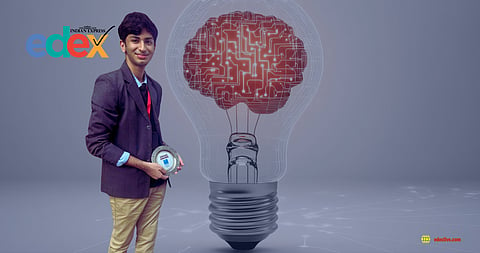

The quintessential three-wheelers, auto-rickshaws, are the lifeline of suburban Mumbai’s transport, adeptly shuttling Mumbaikars through the city’s many arteries.
Rickshaw drivers work long, gruelling shifts and spend hours inhaling traffic fumes. A 2020 study by the Indian Council of Medical Research (ICMR) found that auto-rickshaw drivers have nearly 40 per cent higher rates of respiratory disease than other urban workers. Many drivers travel 75 to 100 kilometres daily, with 60 per cent working 9 to 12-hour shifts on congested roads where in-vehicle PM concentrations are significantly higher than ambient air. The health consequences extend beyond the lungs. Drivers face elevated risks of ophthalmic problems as well as potential dermatologic and cardiovascular diseases.
Arwan Makhija, a 17-year-old from JBCN International School, Mumbai, spent two years researching why Mumbai's auto-rickshaw drivers reject electric vehicles. What he discovered wasn't just about money or infrastructure. It was about awareness. Drivers with formal education were open to switching.
He also discovered that most rickshaw drivers had accepted pollution and dust as an occupational hazard. Yet, most of them did not understand the severity of these health risks: when Waatavaran surveyed 1,200 rickshaw drivers across, roughly half were reported to have lung impairments, but 76 per cent reported they had not experienced health issues from vehicular emissions. This disconnect likely reflects normalisation of the harm rather than its absence.
Arwan surveyed 200+ city drivers and found that 62 per cent cited lack of charging infrastructure and 60 per cent cited high initial investment as primary barriers to adopting EVs. 64 per cent listed purchase subsidies as the most desired support. Even where awareness is high — 85 per cent stated they knew about e-autos — practical gaps stop adoption.
These findings shifted his approach. Instead of waiting for policy to enable EV adoption, he decided to build something that could offer immediate relief.
Working with an innovation lab in Mumbai, Arwan and his brother, Drish, are developing the Smart Zone-Based Mist Dispersion System for auto-rickshaws. Built on a Raspberry Pi Zero with GPS integration and real-time Air Quality Index data, the device uses sensors to detect PM2.5 and PM10 levels. When a rickshaw enters a high-pollution zone, it automatically activates a fine water mist in the driver's breathing space, reducing particulate matter and improving humidity to ease respiratory stress. Manual controls via potentiometers let drivers adjust mist intensity without compromising visibility or safety.
The hardware is built around a small single-board controller, a mist sprayer powered by USB in the rickshaw, a compact pump and a handful of sensors. Key constraints shaped the design: no structural changes to vehicles, minimal maintenance, no visibility compromise, and low cost.
The prototype also logs events. The teenage brothers are building an app that captures where misting triggers most often. The plan is twofold. First, the map can give drivers practical routing information to avoid pollution. Second, aggregated data can help NGOs and city planners identify pollution hotspots that official networks miss.
The device can be retrofitted, allowing installation on existing rickshaws already on the road. Financially, it can be implemented via subsidy partnerships, manufacturer CSR or local financing models.
There are engineering challenges. Mist volume must be calibrated so humidity does not irritate drivers and so visibility remains safe. Water quality matters. And the system must be rugged to survive Mumbai’s monsoon and rough roads. These constraints guide testing at the innovation lab now.
This duo of tech enthusiasts led their robotics team to major wins at the FIRST Tech Challenge, including top awards in the Central Asian and Indian National Championships. But his real focus has always been building systems that function in real-world conditions, not ideal ones. The mist dispersion system reflects that philosophy—it doesn't require government urban policy shifts or infrastructure overhauls. It works within the constraints drivers already face.
"I don't want to design systems for the ideal world," says Arwan. "I want to design for Mumbai."
The project also demonstrates an important shift in student work; mentored internships that place students inside community problems produce prototypes that are practical and empathetic. His approach is small in scale and precise in purpose, offering a model for student engineering that respects constraints and prioritises the people who live the problem.
In short, the device won't solve urban air pollution. But for drivers whose economic reality forces them to choose between earning a living and protecting their health, it could offer a few square feet of breathable air—and a recognition that their lungs matter too.
